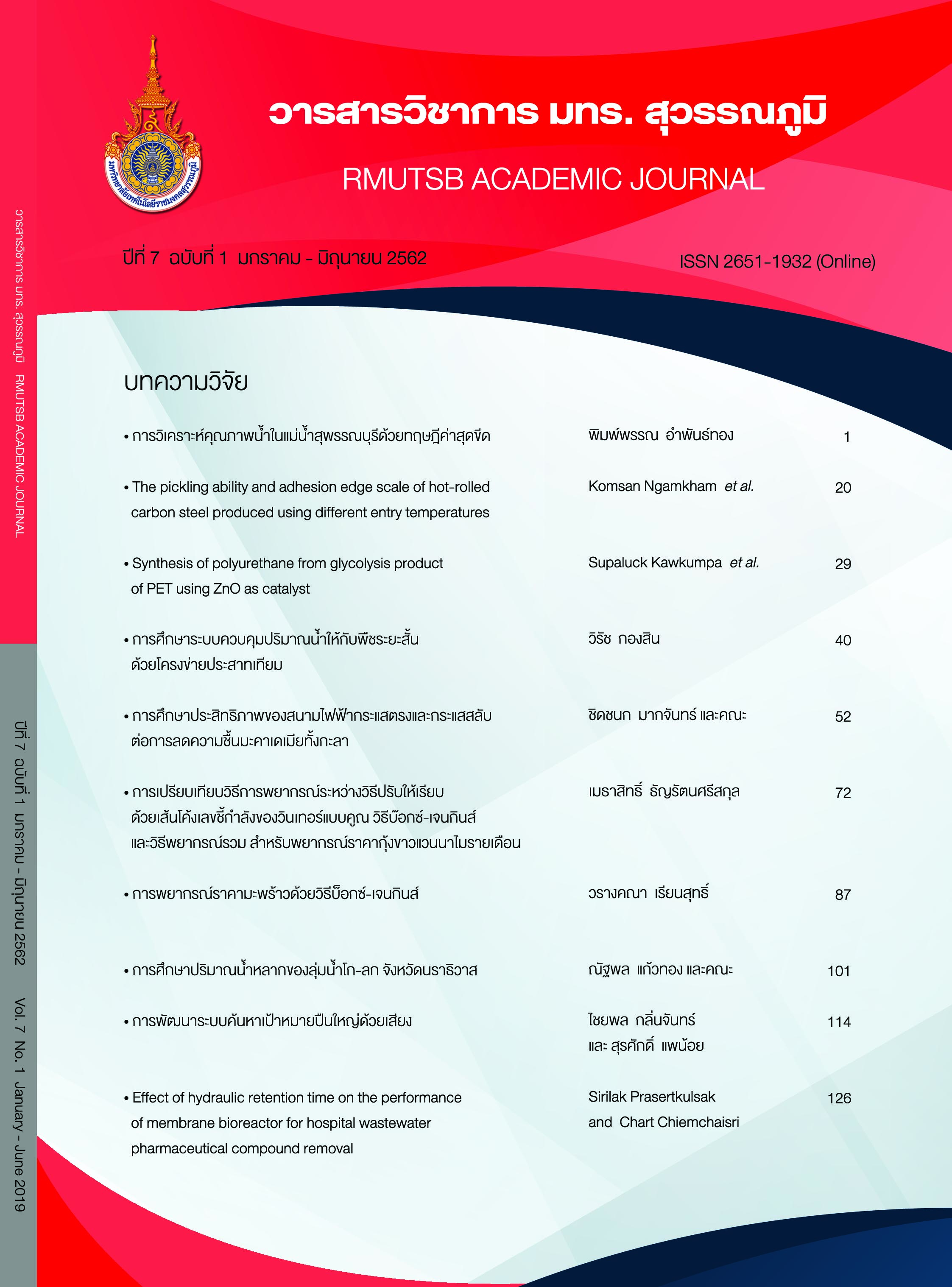The pickling ability and adhesion edge scale of hot-rolled carbon steel produced using different entry temperatures
Main Article Content
Abstract
The objective of this work was to investigate the pickling ability and the strain provoking the edge scale on hot-rolled carbon steel. The pickling test was conducted by immersing the steel samples in 10% v/v HCl solution both with and without industrial inhibitor at 80 oC. It was found that the addition of the inhibitor retarded the dissolution rate of the oxide scale, and this effect is more pronounced when the entry temperature was reduced from 1011 oC to 990 oC. However, in the solution without the inhibitor, the dissolution rates of the oxides formed using different entry temperatures were identical. From the previous work on scale adhesion assessment, the tensile test was applied to evaluate the scale of adherence. As a result, the derivative of the spallation ratio as a function of the imposed strain was calculated in order to determine the strain provoking the maximum spallation. The values were 3.78 ± 0.13% and 4.2 ± 0.28% for the hot-rolled steel produced using the entry temperatures of 1011 oC and 990 oC, respectively. The results showed that the entry temperature did not affect the edge scale adherence and pickling ability.
Article Details
Published manuscript are the rights of their original owners and RMUTSB Academic Journal. The manuscript content belongs to the authors' idea, it is not the opinion of the journal's committee and not the responsibility of Rajamangala University of Technology Suvarnabhumi
References
Chandra-ambhorn, S., Roussel-Dherbey, F., Toscan, F., Wouters, Y., Galerie, A., & Dupeux, M. (2007) . Determination of mechanical adhesion energy of thermal oxide scales on AISI 430Ti alloy using tensile test. Mater. Sci. Technol, 23, 497-501.
Chandra-ambhorn, S., & Klubvohik, N. (2016). Quantification of adherence of thermal oxide scale on low carbon steel using tensile test. Oxid. Met, 85, 103-125.
Chen, R. Y., & Yuen, W. Y. D. (2001). Oxide-scale structure formed on commercial hot-rolled steel strip and their formation mechanisms. Oxidation of Metals, 56, 89-118.
Chen, R. Y., & Yuen, W. Y. D. (2003). Review of the high-temperature oxidationn of iron and carbon steels in air and oxygen. Oxid. Met, 59, 433-468.
Chattophadyay, A., & Chanda, T. (2008). Role of Si on oxide morphology and pickling behaviour of automotive steels. Scripta mater., 58, 882-885.
Kofstad, P. (1988). High temperature corrosion. London: Elsevier.
Ngamkham, K., Klubvihok, N., Tungtrongpairoj, J., & Chandra-ambhorn, S. (2012). Relationship between entry temperature and properties of thermal oxide scale on low carbon steel strips. Steel Res Int, Spl. Isssu, 991-994.
Ngamkham, K. (2014). Effect of rolling temperature on mechanical adhesion and pickling behaviour of oxide scale on hot-rolled low carbon steel strips. (Doctoral dissertation). KMUTNB, Bankok.

